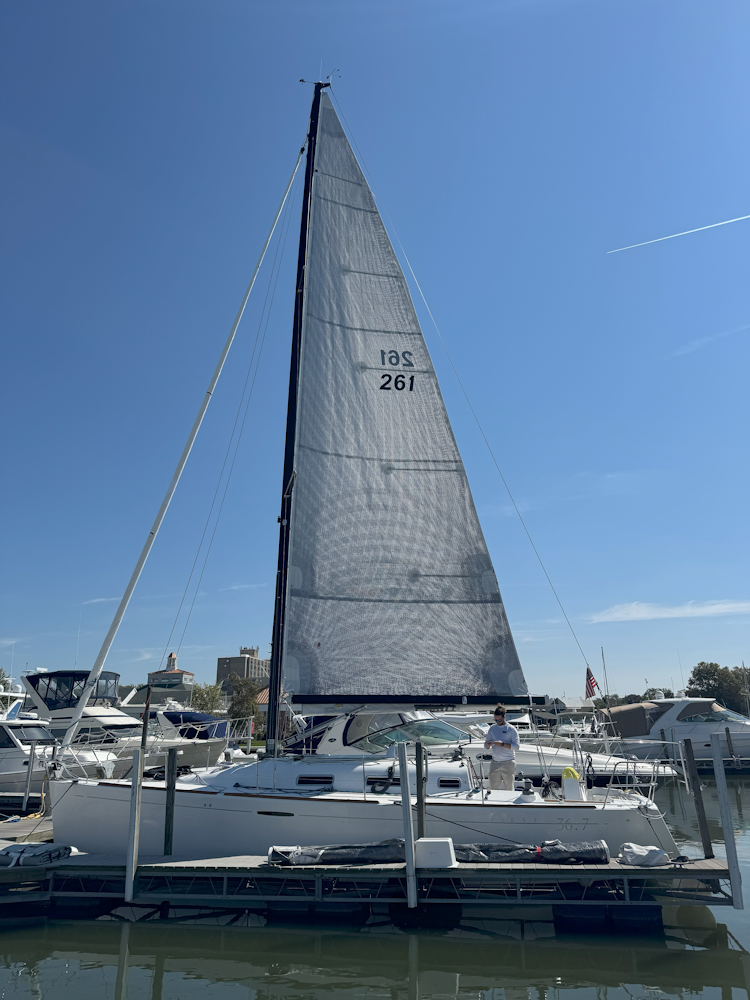Ordering a new mainsail quote from a sailmaker is one of the most important steps in upgrading your sailboat. A properly designed mainsail improves performance, balance, and handling—especially for long-distance or weekend cruising. Whether you’re replacing an old sail or ordering your first custom one, here’s how the process of getting a new mainsail quote typically works from start to finish.
Step 1: Contacting the Sailmaker
The process begins by reaching out to a sailmaker through our website, email, or phone. Most will start by gathering some basic information about your boat and how you sail. Expect to provide details like:
- Boat make, model, and year
- Rig type (masthead, fractional, or other)
- Type of sailing you do (coastal cruising, bluewater passages, or club racing)
The more information you provide at this stage, the more accurate your new mainsail quote will be. This helps the sailmaker recommend the right cloth, hardware, and design approach for your specific setup.
Step 2: Measuring Your Rig
Even boats of the same model can have small rig differences, so accurate measurements are essential. The sailmaker will usually send a measurement form or guide you through taking your own. In some cases, a local rigger or sailmaker can come measure for you.
Typical measurements for a mainsail include:
- P – distance from the boom to the top of the main halyard
- E – length of the boom from the mast to the clew
- Luff, leech, and foot lengths
- Mast track, batten car, and reefing system details
If you’re replacing an existing sail, your old sail dimensions can be a reference point, but confirming rig measurements ensures your new mainsail quote reflects exact specifications.
 Step 3: Discussing Sail Design
Step 3: Discussing Sail Design
Once measurements are confirmed, the next step is the design discussion. This is where your sailing habits and preferences shape the sail. The sailmaker will help you decide whether you want a sail built for durability, performance, or a mix of both.
Key design choices include:
- Sailcloth material: Most cruising sails use high-quality Dacron, while hybrid or laminate fabrics offer better shape retention.
- Batten setup: Choose between full battens, partial battens, or a combination for easier handling.
- Reefing points: One or two for casual cruising, three for offshore use.
- Furling system compatibility: Adjusted design for in-mast or in-boom furling.
- Extras: Draft stripes, UV protection, cunningham points, and logos.
The goal is to make sure your new mainsail quote aligns with your sailing style—so you get a sail that’s easy to handle, long-lasting, and efficient.
Step 4: Reviewing the Quote
After gathering your measurements and preferences, the sailmaker will prepare a detailed new mainsail quote. It usually outlines:
- Material and construction details
- Design notes or 3D renderings
- Hardware and finishing components
- Estimated delivery timeline
- Pricing and warranty options
Many sailmakers provide a few versions—like a standard cruising sail, a premium offshore sail, and sometimes a performance laminate option. Carefully review each version to understand how price, weight, and durability differ.
 Step 5: Placing the Order
Step 5: Placing the Order
Once you approve your new mainsail quote, you’ll pay a deposit and the loft will begin production. The sailmaker’s design team will finalize your sail plan using computer-aided cutting and precise stitching methods to ensure accuracy.
Production typically takes about 4–8 weeks, depending on the season and sail complexity.
Step 6: Delivery and Fit Check
When the sail is ready, it will be shipped directly to you or your local loft. Once hoisted, check that:
- The sail raises and reefs smoothly
- The leech and luff tensions look correct
- Battens and reef points align properly
If adjustments are needed, most sailmakers offer fine-tuning or re-cutting services to ensure your mainsail sets perfectly.
Step 7: Follow-Up and Long-Term Care
A good sailmaker doesn’t stop once the sail is delivered. Many will follow up after you’ve used it to confirm the fit and performance. They might suggest a brief inspection after your first season or recommend reinforcement for high-load points.
To keep your new mainsail in top shape:
- Store it dry and folded or rolled
- Rinse with fresh water after saltwater sailing
- Schedule annual inspections to catch wear early
Getting a new mainsail quote might seem like a small step, but it sets the foundation for years of better sailing. By providing detailed measurements, discussing your goals, and reviewing your quote carefully, you’ll end up with a sail that fits your boat—and your style—perfectly.

